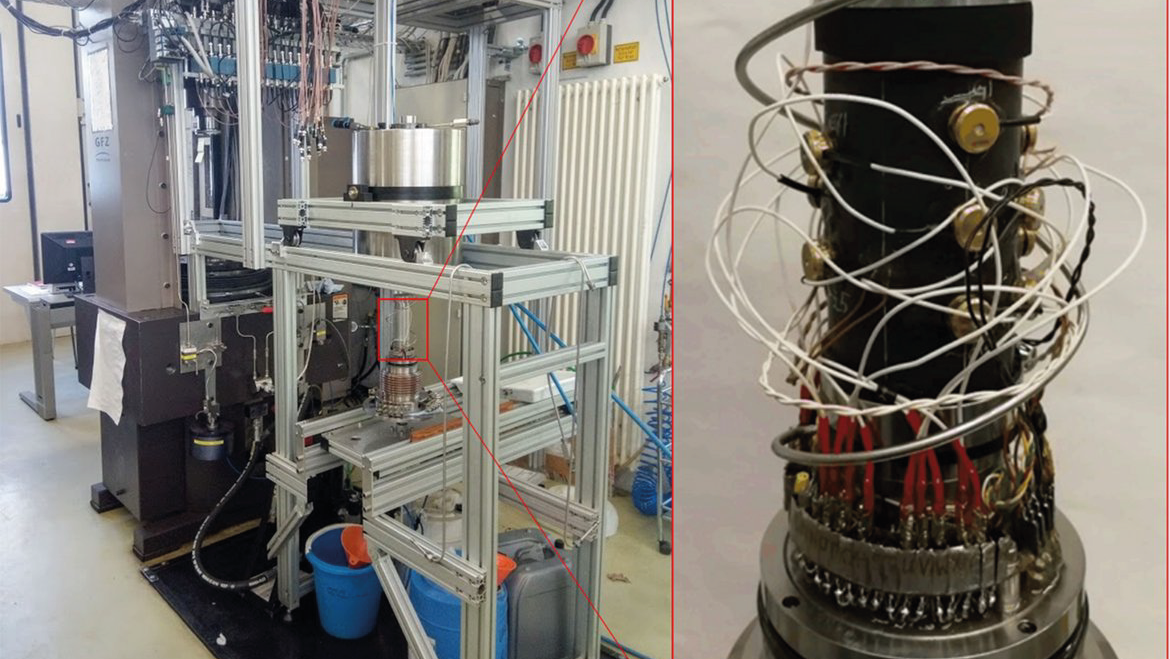Experimental Rock Deformation Laboratory
Contact:
Web:
Infrastructure belongs to:
For rock deformation experiments we handle different apparatuses, allowing to perform brittle (low temperature) tests on large rock samples (MTS servo-hydraulic press) and high temperature (ductile) experiments on small samples (Paterson-type gas deformation apparatus at high confining pressure, uniaxial creep rig at atmospheric pressure). The following facilities are operated: servohydraulic MTS press, gas deformation apparatus and high temperature creep apparatus.
Categories
Disciplinary Keywords
- Acoustic Emission Measurements
- High-Temperature Creep Tests
- Rock Mechanics
- Triaxial Deformation and Torsion Experiments
- Ultrasonic Velocity Measurements
Selected infrastructures
Instrumentation
Laboratory instrumentation
Instruments
-
Gas Deformation Apparatus
Paterson-type gas apparatus for triaxial deformation and torsion experiments under high pressure - high temperature conditions.
-
High Temperature Creep Apparatus
Uniaxial creep rig for high temperature creep tests under controlled chemical environment (‘dead-load’ or stepper motor-controlled)
-
Servohydraulic MTS Press
Stiff servohydraulically controlled press for acoustic emission (AE) and ultrasonic velocity measurements on triaxially stressed rocks
Links
Data Publication
Key Publication
- Rybacki, E., Herrmann, J., Wirth, R., Dresen, G. (2017): Creep of Posidonia Shale at Elevated Pressure and Temperature. - Rock Mechanics and Rock Engineering, 50, 12, 3121-3140.
- Rybacki, E., Meier, T., Dresen, G. (2016): What controls the mechanical properties of shale rocks? – Part II: Brittleness. - Journal of Petroleum Science and Engineering, 144, 39-58.
- Rybacki, E., Reinicke, A., Meier, T., Makasi, M., Dresen, G. (2015): What controls the mechanical properties of shale rocks? – Part I: Strength and Young's modulus. - Journal of Petroleum Science and Engineering, 135, 702-722.
Additional information
Seismomechanics Lab
